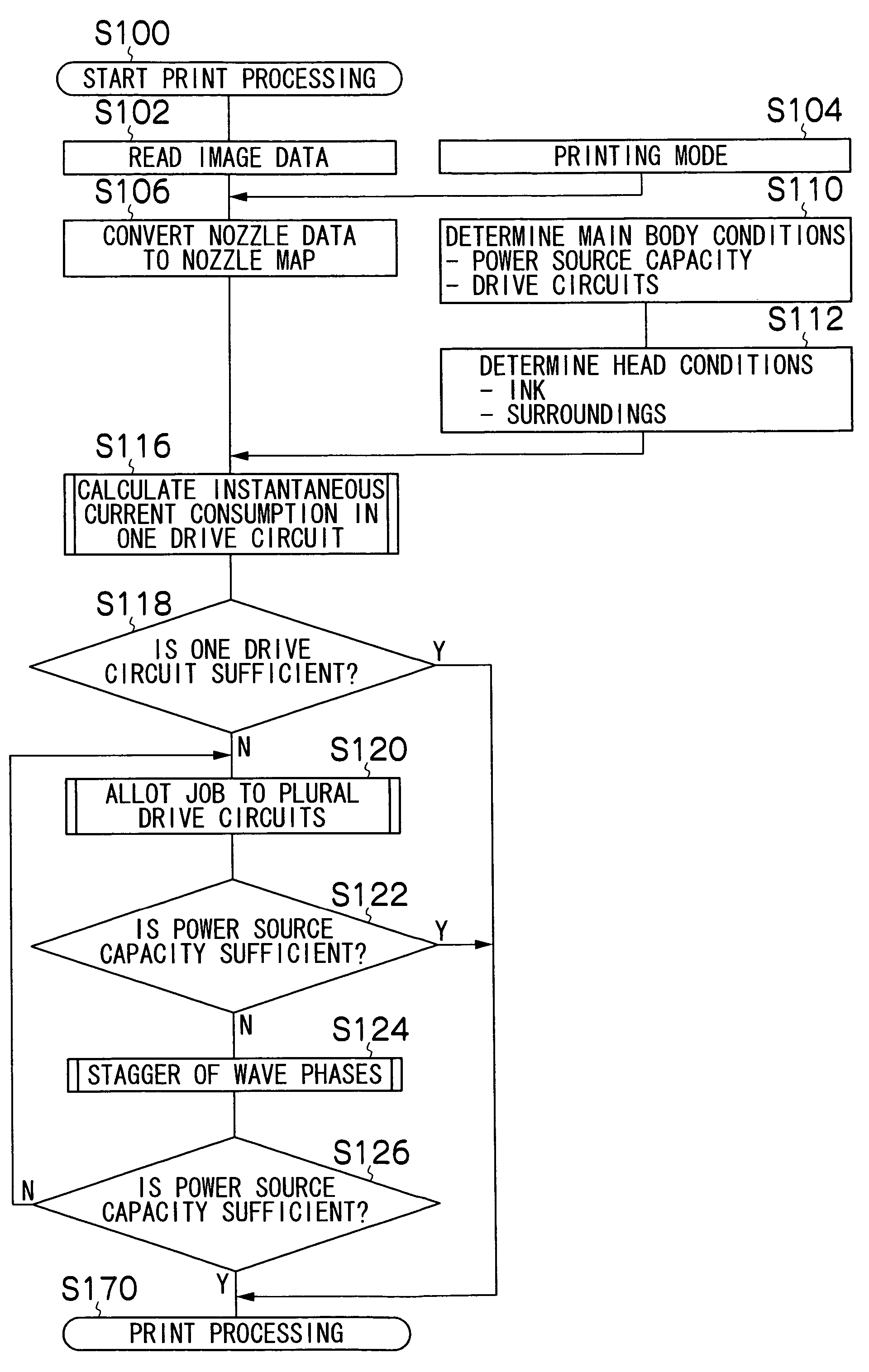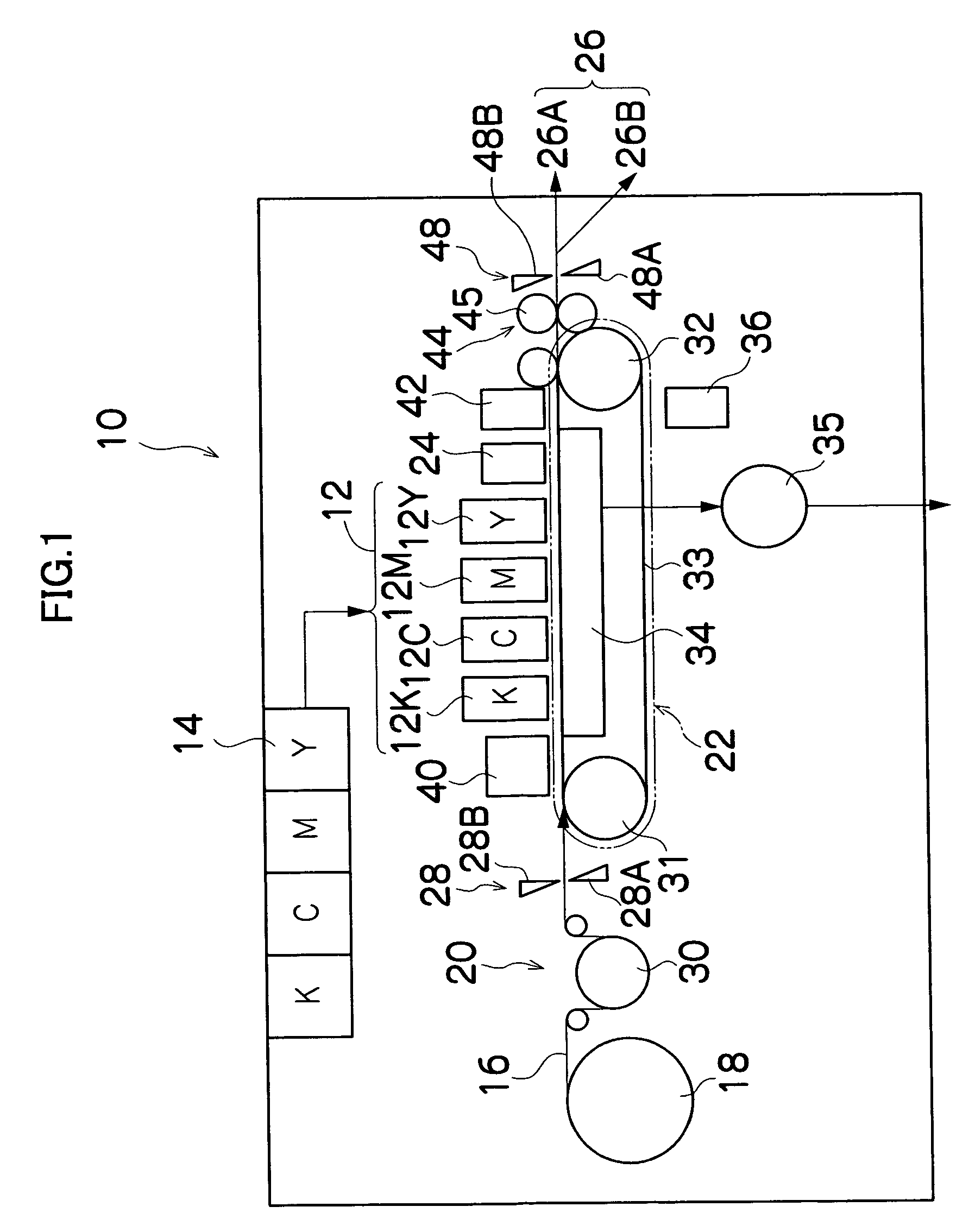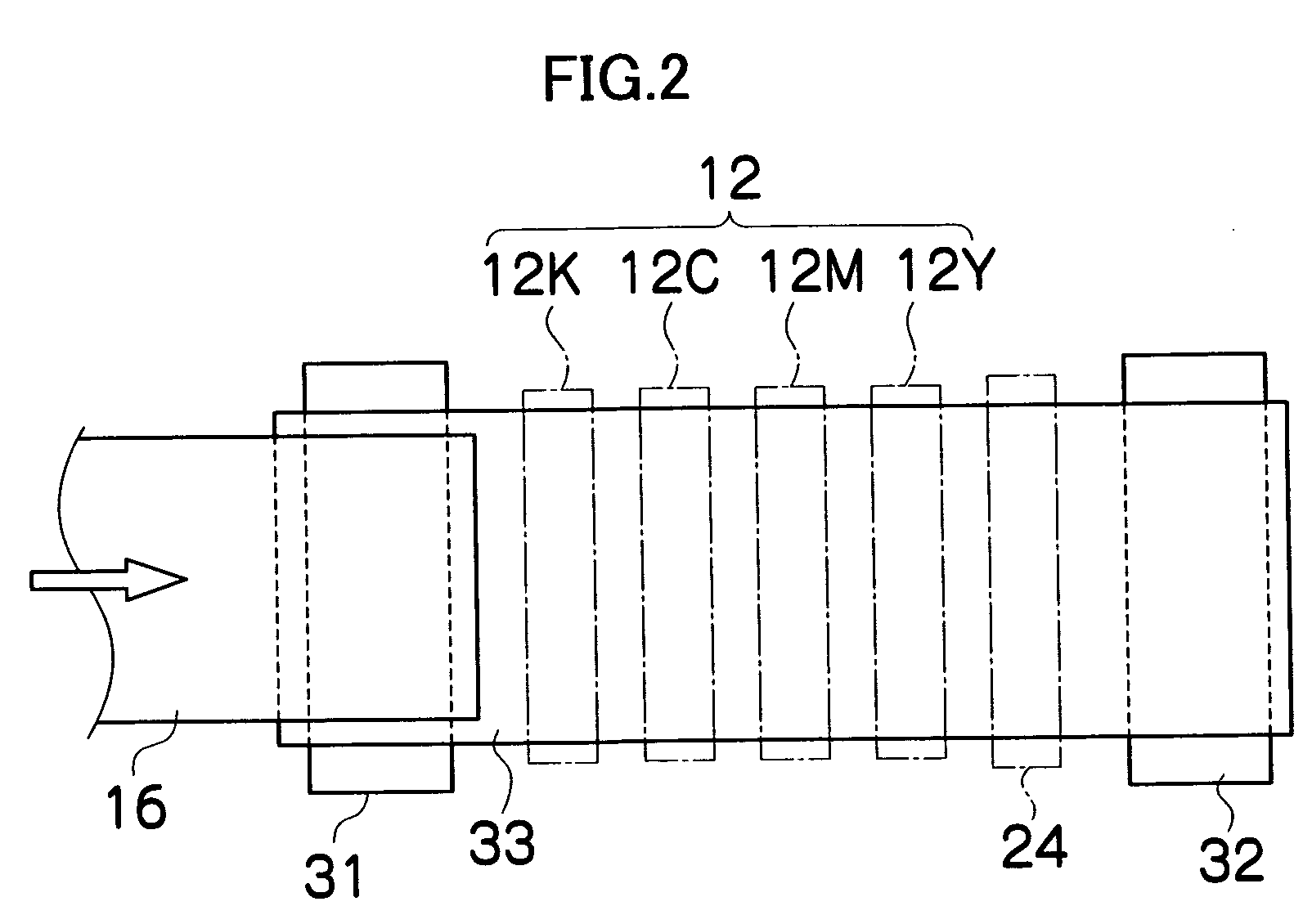Image forming apparatus and drive control method for liquid ejection head
a technology of liquid ejection head and drive control method, which is applied in the direction of printing, other printing apparatus, etc., can solve the problems of unsatisfactory ejection, image unevenness, driving wave distortion, etc., and achieve the effect of reducing electrical crosstalk unevenness, reducing image unevenness, and reducing image unevenness
- Summary
- Abstract
- Description
- Claims
- Application Information
AI Technical Summary
Benefits of technology
Problems solved by technology
Method used
Image
Examples
first embodiment
[0198]FIG. 14 is a flowchart showing the print control. When the print processing begins (step S100), image data for printing is read (step S102), and information for the printing mode (for example, normal paper printing, high image quality printing, high speed printing, and the like) is acquired (step S104). A nozzle map is then created to determine which nozzles have a voltage applied to the actuators thereof to eject ink on the basis of the image data and the printing mode (step S106).
[0199] Then, the conditions of the main body of the inkjet recording apparatus 10 are determined (or the information thereof is acquired), so that information pertaining to the power source capacity, the number of drive circuits (four in the example in FIG. 9), and the like is obtained (step S110). The head conditions are determined (step S112), so that information pertaining to the state and type of the head, the ink conditions (for example, type and amount remaining), and the surroundings is obtai...
second embodiment
[0205]FIG. 15 is a flowchart showing the print control. The steps in FIG. 15 that are common to the flowchart in FIG. 14 are denoted with the same step numbers, and descriptions thereof are omitted. In the flowchart in FIG. 15, steps S118 through S126 in FIG. 14 are replaced by steps S130 through S134.
[0206] More specifically, a plurality of drive circuits are selected (step S130) and the phases of a plurality of driving waves are staggered (step S132) in accordance with the results of the instantaneous current consumption calculated in step S116 and the conditions of the image processing effects (ejection volume, ejection intervals, ejection times, deposition positions). Then, the instantaneous current consumption of the drive circuits is analyzed under these conditions, the instantaneous current consumption of the entire system is estimated, and the results of this calculation are compared with the power source capacity (i.e., the specific upper limit) (step S134).
[0207] If the r...
third embodiment
[0209]FIG. 16 is a flowchart showing the print control. The steps in FIG. 16 that are common to the flowchart in FIG. 14 are denoted with the same step numbers, and descriptions thereof are omitted. In the flowchart in FIG. 16, steps S118 through S126 in FIG. 14 are replaced by steps S140 through S146.
[0210] More specifically, one of the plurality of drive circuits to apply the common driving wave to one of the nozzles is selected from the plurality of drive circuits according to the results of the instantaneous current consumption calculated in step S116 and the previous nozzle map history (step S140). For example, the drive circuit different from the drive circuit used in the previous ejection is selected.
[0211] Next, the calculated instantaneous current consumption is compared with the specific upper limit that has been set in accordance with the power source capacity (step S142), and if the instantaneous current consumption of the drive circuits to be used in total is estimated...
PUM
 Login to View More
Login to View More Abstract
Description
Claims
Application Information
 Login to View More
Login to View More - R&D
- Intellectual Property
- Life Sciences
- Materials
- Tech Scout
- Unparalleled Data Quality
- Higher Quality Content
- 60% Fewer Hallucinations
Browse by: Latest US Patents, China's latest patents, Technical Efficacy Thesaurus, Application Domain, Technology Topic, Popular Technical Reports.
© 2025 PatSnap. All rights reserved.Legal|Privacy policy|Modern Slavery Act Transparency Statement|Sitemap|About US| Contact US: help@patsnap.com



